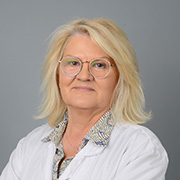Professor Nathalie Lassau

Professor Nathalie Lassau, appointed Knight of the French Legion of Honour in 2025 and Knight of the Order of Academic Palms in 2023, is a medical specialist at cancer centres. She is a Professor of Radiology at the University of Paris-Saclay and a hospital practitioner. She also co-directs the Biomaps UMR1281 CEA INSERM CNRS laboratory at the University of Paris-Saclay.
Since 2014, Nathalie Lassau has led the Institute of Advanced Biomedical Training (IFSBM), a department within the Faculty of Medicine at Paris-Saclay University. The IFSBM provides training for engineering students from top French institutions in the healthcare field, in partnership with CentraleSupélec, IOGS, ENS Paris-Saclay, AgroParisTech, École Polytechnique, and Polytech Paris-Saclay.
Professor Lassau has authored over 185 scientific publications in international journals. She led the multicentric INCa STIC DCE-US study, which involved 539 patients across 20 French centres. This study contributed to the validation of a predictive biomarker using contrast-enhanced ultrasound, in the evaluation of oncology treatments. This technique has been incorporated into European and international guidelines.
She serves as Vice-President of the French Society of Radiology (SFR), is a member of the academic council of CentraleSupélec, and a member of the College of Radiology Educators (CERF), the American Institute of Ultrasound in Medicine (AIUM), and the Radiological Society of North America (RSNA). She is also a member of the national CSS7 commission of INSERM and the national coordinator for the ultrasound training of radiology interns. In 2024, she was elected to the board of the research committee at the University of Paris-Saclay. She is responsible for education at the IHU PRISM.
Professor Nathalie Lassau was in charge of organising the Artificial Intelligence forum at the French Radiology Congress (JFR), including the organisation of the first data challenge at the Journées Francophones de Radiologie 2018. This challenge involved five simultaneous artificial intelligence challenges in MRI, CT, and ultrasound, with more than 5,000 patients included over four months by 50 public and private centres and 25 multidisciplinary teams (students, radiologists, engineers, and companies).
